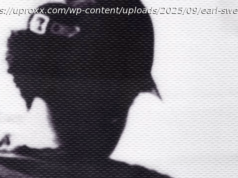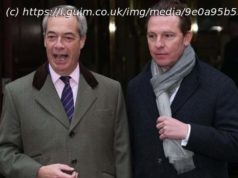 Imagine finding yourself on a futuristic stage with rock legends Queen as they blast out their greatest hit, Bohemian Rhapsody. A neon-rendered Freddie Mercury struts around you.
Imagine finding yourself on a futuristic stage with rock legends Queen as they blast out their greatest hit, Bohemian Rhapsody. A neon-rendered Freddie Mercury struts around you.
Well, now that fantasy experience can be a reality – albeit a virtual one.
Last year Queen collaborated with Google Play and Enosis VR to create a 360-degree virtual reality (VR) take on the groundbreaking video for the band’s 1975 hit.
This video is often credited with fuelling the boom in pop videos that characterised the 1980s.
The interactive app uses 2D and 3D animations combined with motion-captured ballet dancers to immerse the viewer in the late Freddie Mercury’s « subconscious mind ».
The narrative changes based on where your gaze falls as you watch through your VR headset.
The original song was also remixed and mastered to create an interactive audio experience, the sound changing as the viewer turns their head.
So-called « immersive » technologies are transforming what used to be a marketing tool into a new revenue stream for an industry whose business model was decimated by digital 20 years ago.
« It’s a powerful sensation to watch something in 360 degrees, far more so than to watch it on a flat, framed screen, » says Dylan Southard, creative director at US design studio VR Playhouse.
His firm has worked on 360-degree VR videos with artists such as US R&B singer Dawn Richard.
« You’re more present and so things are more heightened, » says Mr Southard. « It can be emotionally intense. You can feel as if you’re right inside the story. »
Although it is still early days for the technology – affordable VR headsets have only recently come on to the market – experimentation is rife in the music industry.
Zach Fuller, paid content analyst at UK media and technology firm MIDiA Research, says VR is emerging in an increasingly « visual-centric » music landscape.
« Examples are the accompanying film for Beyonce’s Lemonade [album] and Frank Ocean’s ‘visual album’ Endless, suggesting a strong future for visual music experiences that bodes well for VR, » he says.
In a world where consumers are able to stream songs anywhere at any time, standing out from the crowd is no mean feat.
« There’s so much competition for attention, so anything that’s new and potentially remarkable is going to get played with, » says Ross Cairns, a UK-based creative director who worked on a VR video to accompany Biffy Clyro’s single Flammable last summer.
As well as giving music fans more exciting, immersive videos to watch, VR has great potential in the live music space as well.
« The sense of presence we can achieve in VR is incomparable to any other medium, » says Jacek Naglowski, chief executive of Circus Digitalis, a Polish publisher that worked on one of the first cinematic VR music videos in Europe.
« Experiencing the concert in VR is something that people would be willing to pay for, » he says. « In future it may be one of the most important revenue streams for musicians and producers. »
Live concert and festival specialist Live Nation announced last year that it would be teaming up with US bank Citi and NextVR to create a series of VR live events.
« The obvious thing is to use this technology to open up live concerts to a wider audience and give them a better experience than just watching video in flat screen, » says Tom Szirtes, creative technologist at UK digital design studio Mybronic.
With arrays of cameras that can capture 360-degree images from a number of vantage points – including on stage – a VR live concert could be an even more thrilling experience than being there in person.
The technology also offers bands the opportunity to perform live in a shared VR space, freeing them from the need to hire expensive venues.
In 2014, UK indie rock band The Indelicates released a VR single, The Generation That Nobody Remembered. Vocalist Simon Clayton believes fans and other musicians could even play along. « [Technology] could let us form bands in chatrooms with musicians from all over the world, » he says.
Mybronic is already experimenting in this space.
« Imagine a band projecting themselves into a computer-generated environment and allowing other people to connect, » says Mr Szirtes. « It opens up all sorts of interesting possibilities for artists to connect to new audiences in new ways. »
The future will be about entering the musician’s world, rather than simply engaging with an individual song.
Anthony Batt, co-founder of US-based VR creative studio Wevr, says: « The [VR experience] won’t necessarily constantly entertain like a music video, but consumers will enter into the artist’s space, into their gallery. »
Wevr produced the VR video experience for the track Old Friend from the band Future Islands last year.
VR Playhouse’s Dylan Southard agrees: « A pop star will be able to create a whole world that their fans can visit and interact with. »
The challenge, as always, is making all this VR tech commercially viable.
Users pay $2.99 (£2.40) to enjoy Wevr’s Old Friend VR experience, and Mr Batt says sales are « in the thousands ».
Wevr also has a VR subscription network called Transport.
« In turn, we recycle that money back to the artists and musicians, » he says.
US company Vrtify specialises in taking traditional music content and transforming it into an immersive experience, paying 70% of its income back to artists.
« Immersive technologies aren’t mainstream, but we all see how quickly they’re evolving, » says Marcus Behrendt, Vrtify’s chief marketing officer.
« It will soon represent a very important income for the music industry because it is changing how fans are consuming music. »
New revenue streams from advertising, membership subscriptions and pay-per-view are possible once the audience grows, he believes.






